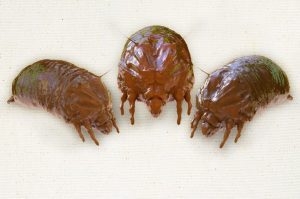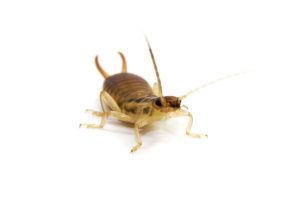Tips for Bedbug free travel
BEST PRACTICES FOR THE CONCERNED TRAVELLER
This guide is written for those people that want to travel smart and take precautions to avoid bed bugs while traveling. It contains some of the best tips and tricks for avoiding bed bugs during travel so that you don’t bring them home with you as an unwelcome souvenir.


BEFORE LEAVING FOR YOUR TRIP
1. Encase all of your mattresses and box springs.
Bed-bug-proof encasements will prevent bed bugs from infesting your mattress and box spring. Equally as important, the smooth, white encasements make it much easier to spot bugs and other signs of an infestation. Encasements are keys to early detection and rapid response as the sooner you find an infestation, the easier it is to get rid of.
2. Install interception devices.
Think of interception devices as bed bug alarms. These devices catch bed bugs as they travel around your home which improves the chance of early detection. As with encasements, these devices will make your life easier in the event that bed bugs do come home with you from a trip.
3. Pack heavy duty plastic bags in your car.
Purchase heavy duty (2 ml) plastic bags that are large enough to fit your luggage in and leave them in your vehicle. When you return from your trip, seal your luggage in these bags which will isolate any bed bugs that may be on your luggage to prevent your vehicle and home from becoming infested while you go through the unpacking process.
4. Pack for your trip.
Hard-shelled luggage is much less attractive and difficult to infest for bed bugs compared with fabric luggage. Avoid packing clothing that are difficult to clean as hot laundering and dry cleaning clothes are effective in eliminating any bed bugs associated with them. Pack toiletries and other items that you can’t wash in Ziploc® bags to protect these items from bed bugs.
DURING YOUR STAY AWAY
A quick inspection of your accommodations and placing your luggage in low-risk areas for bed bugs are two simple steps that you can take to protect yourself and your belongings from bed bugs.
1. Keep luggage closed and away from areas where bed bugs hide.
Keep your luggage away from the bed or other upholstered furniture in the room. Storing it in the bathtub and removing it when you shower is actually ideal since bed bugs are not typically found in the bathroom and bed bugs don’t climb well on smooth surfaces. At a minimum you will want to keep your luggage on the luggage rack and situate it so it is not touching any walls or furniture if you can. Remember, the less contact with the sleeping area the fewer opportunities for bed bugs to get into the luggage.
2. Conduct a very basic inspection of the bed.
You should be able to see a well-established bed bug infestation simply by pulling back the bed linens and looking at the edges of the mattress and box spring. Look for evidence of live bugs, dark brownish to black spots or stains, or shed skins from bed bugs. Bed bugs are about the size of an apple seed, so most should be visible with the naked eye.
3. Keep items that can not be laundered in sealed Ziploc® bags.
Keep items that can’t be laundered (books, electronics, toiletries, laptops, etc.) in Ziploc® bags when they are not in use. This tip is especially pertinent at night while you are sleeping and the bed bugs may come out in search of food.
4. Notify hotel management immediately if you suspect bed bugs.
Notify the hotel management if you think you see evidence of bed bugs or you wake up with itchy welts on your body. Although itchy irritations are not always caused by bed bugs, hotel management should be aware of your concern so they can investigate the cause. Depending on the outcome of the investigation, how you handle the situation is your decision.
RETURNING HOME FROM YOUR DESTINATION
This is the most important section to reduce the likelihood of introducing bed bugs into your home. TRAVEL bedbugfree123.com offers some effective tips, but they are certainly not foolproof—there’s still a chance you can bring home bed bugs. If you have any reason to believe that you have encountered bed bugs during your stay or that your belongings are infested, you should keep all items sealed in bags and call a pest management professional to evaluate the situation.
1. Bag and seal luggage before placing in your vehicle or as soon as you get home.
Place all luggage in the heavy duty plastic bags that you set up before your trip. If bed bugs are on your luggage, this step will keep them isolated until you can deal with the luggage and its contents.
2. Unpack carefully and methodically.
If possible, unpack your luggage in an area that is well lit and away from any furniture and sleeping areas. Outdoors, in a garage, or in a cleared area in the basement are ideal places to unpack.
• Take the luggage out of the containment bag and inspect the bag and dispose of it in an outdoor trash can.
• Unpack one suitcase at a time, using plastic bags or dissolvable laundry bags to separate clothing that can be laundered (further separated into whites and colors to make things easier later on), clothing that must be dry cleaned, and items you won’t launder.
• Keep your laundry in the tied off bags until you are ready to use one of the methods described in the next section.
• Items that cannot be laundered that were sealed in Ziploc® bags throughout your stay can be removed from the bags and are immediately ready for use. Throw the bags away in an outdoor trash receptacle immediately. If you have any additional concerns about these items carefully inspect them.
• After you’ve unpacked, keep the luggage in a new sealed plastic bag until your next trip. Another option is to heat treat it using a portable heating device.
3. Launder your clothes.
• When laundering clothes be aware that a hot dry cycle is the most effective option for addressing potentially infested clothing. You can simply put any items that can withstand a hot dry cycle directly in the dryer to address these concerns. We recommend a full dry cycle as the size of the dryer load can dictate how long the items should be dried for.
• For items you want to wash, be sure to follow all the manufacturer’s directions in regards to what temperatures and cycles you can expose the clothing to.
• If you are going to wash items, a hot wash cycle will also kill any bed bugs and their eggs.
• A cold wash cycle will not affect bed bugs.
4. Inspect regularly.
If you followed our previous recommendations in this document, your final line of defense is already in place. This consists of the encasements and interception devices that you installed before your trip. Regularly inspect the encasements when you change your sheets and take a peek in the monitors at least once a week. If you see any signs of bed bugs or notice any suspicious itchy reactions, immediately call a pest management professional to investigate the possibility of bed bugs. For additional information, please visit our website at www.bedbugfree123.com.


Comments are closed.